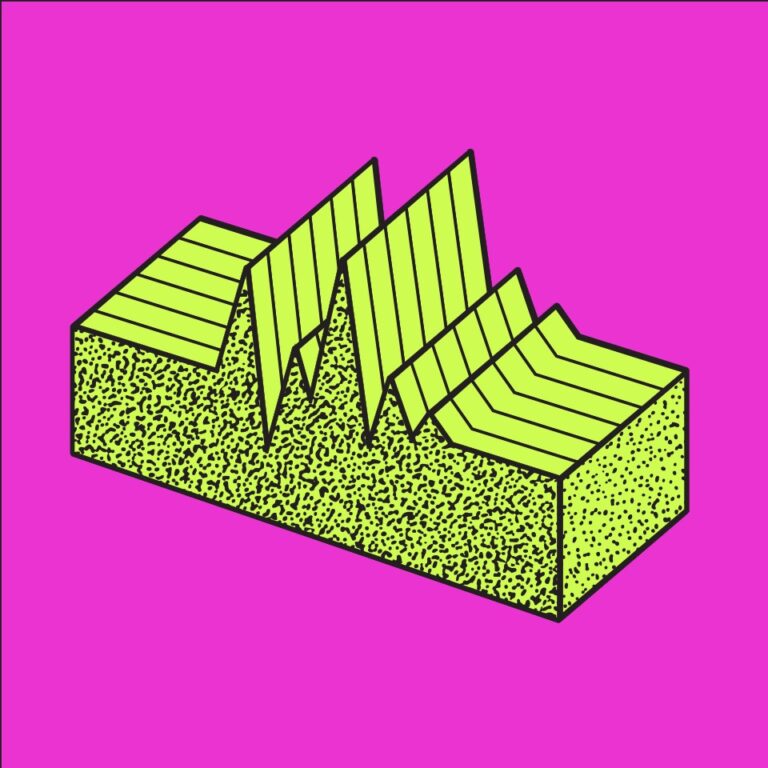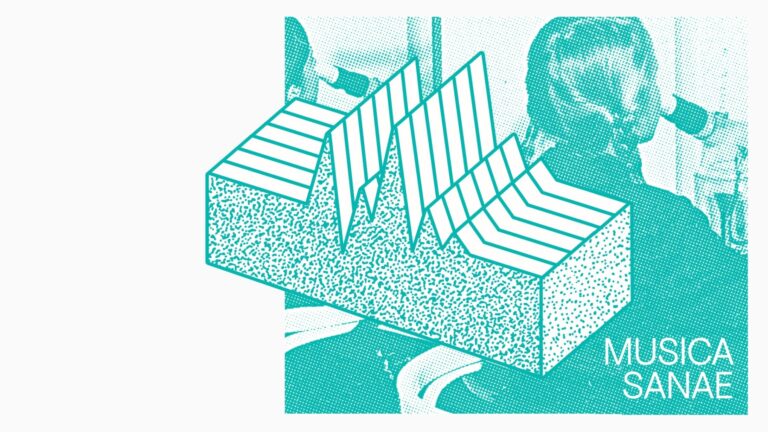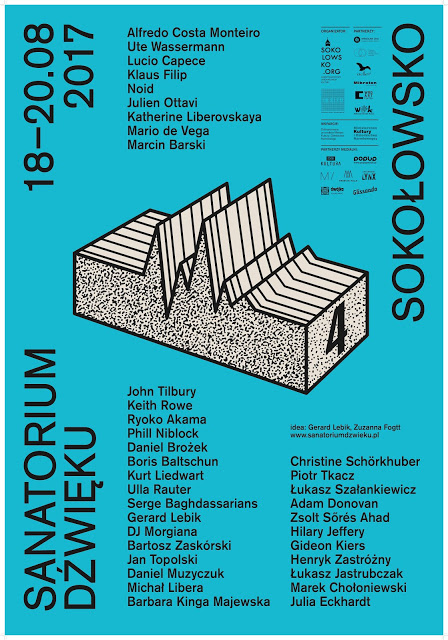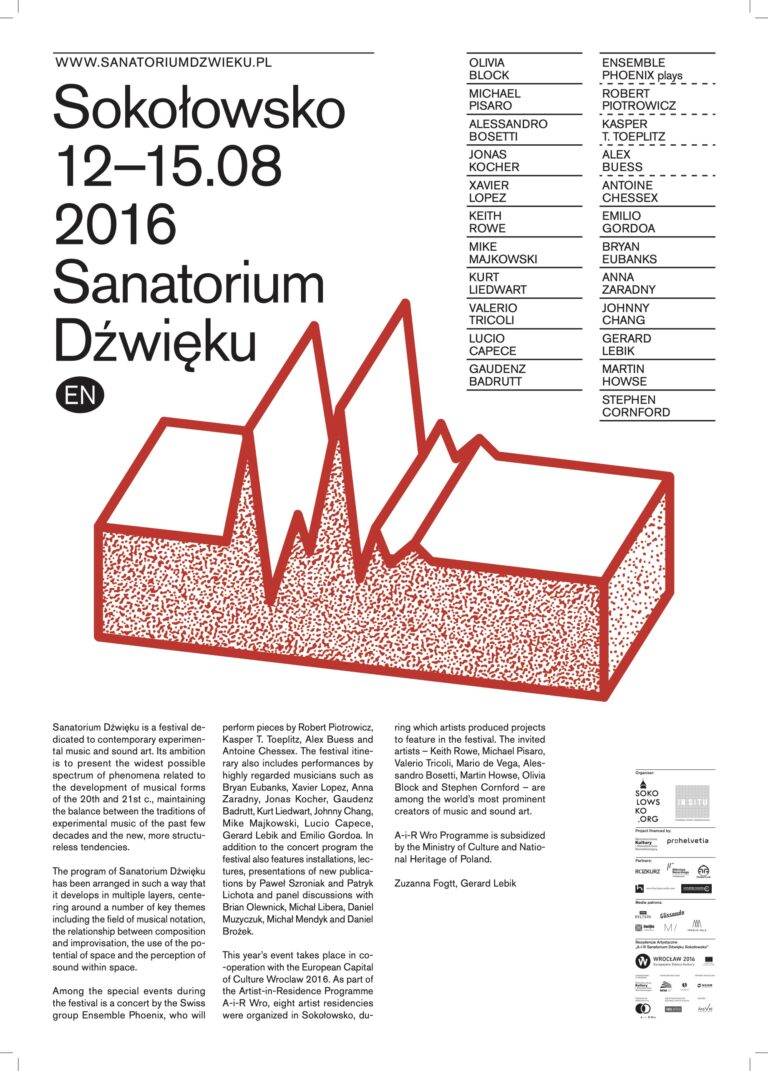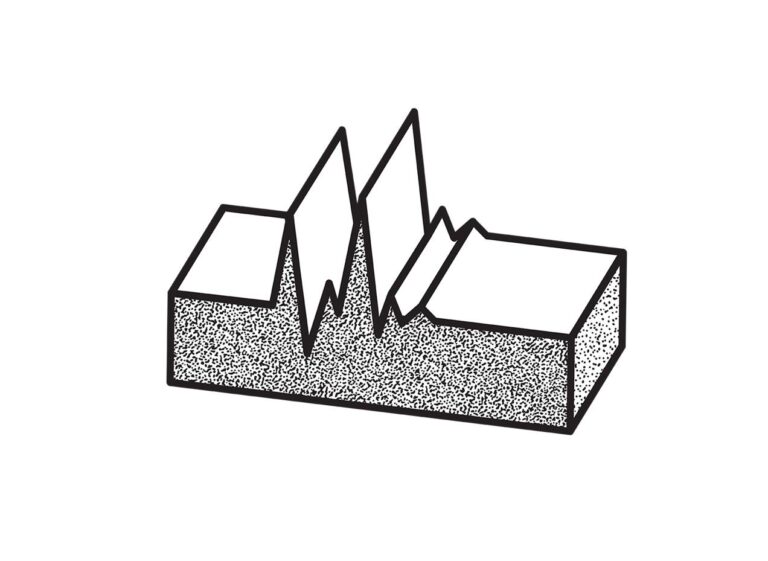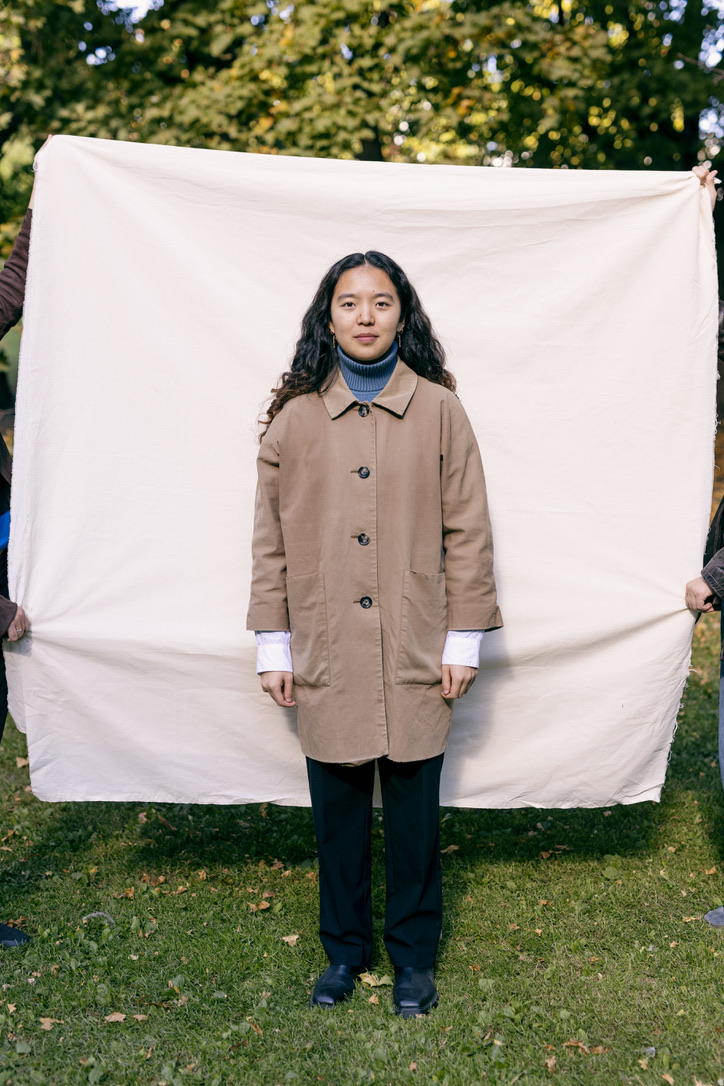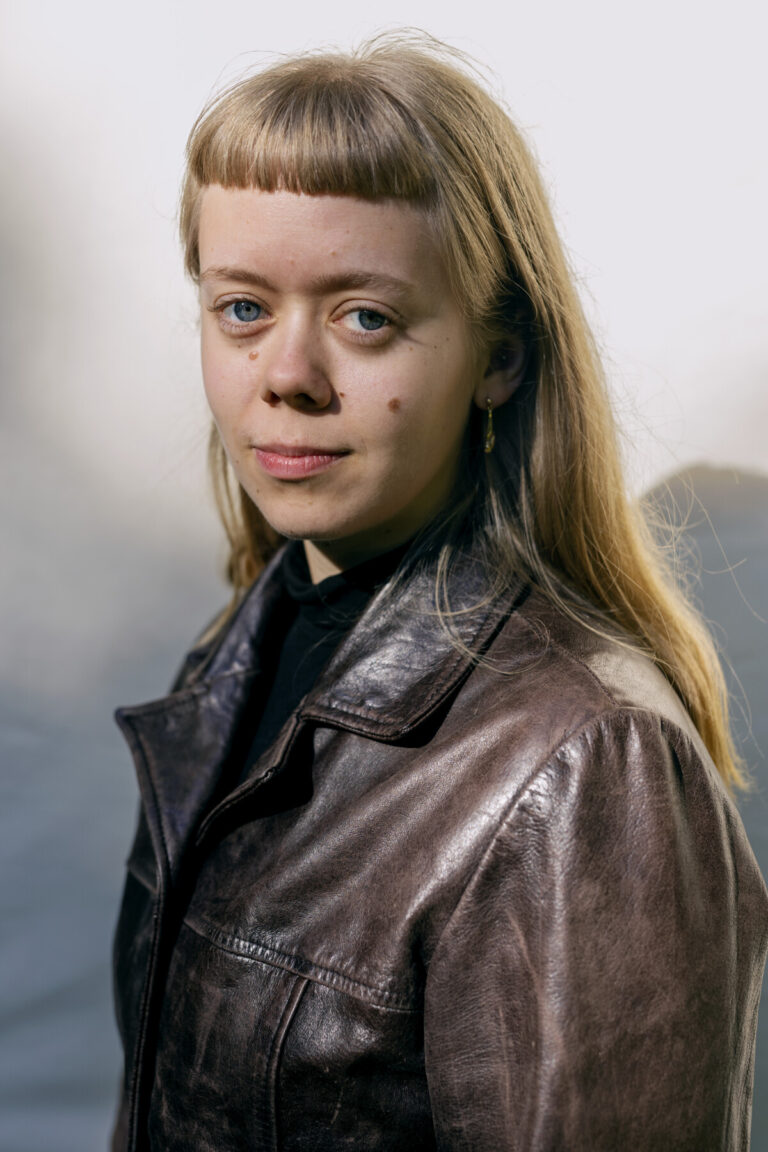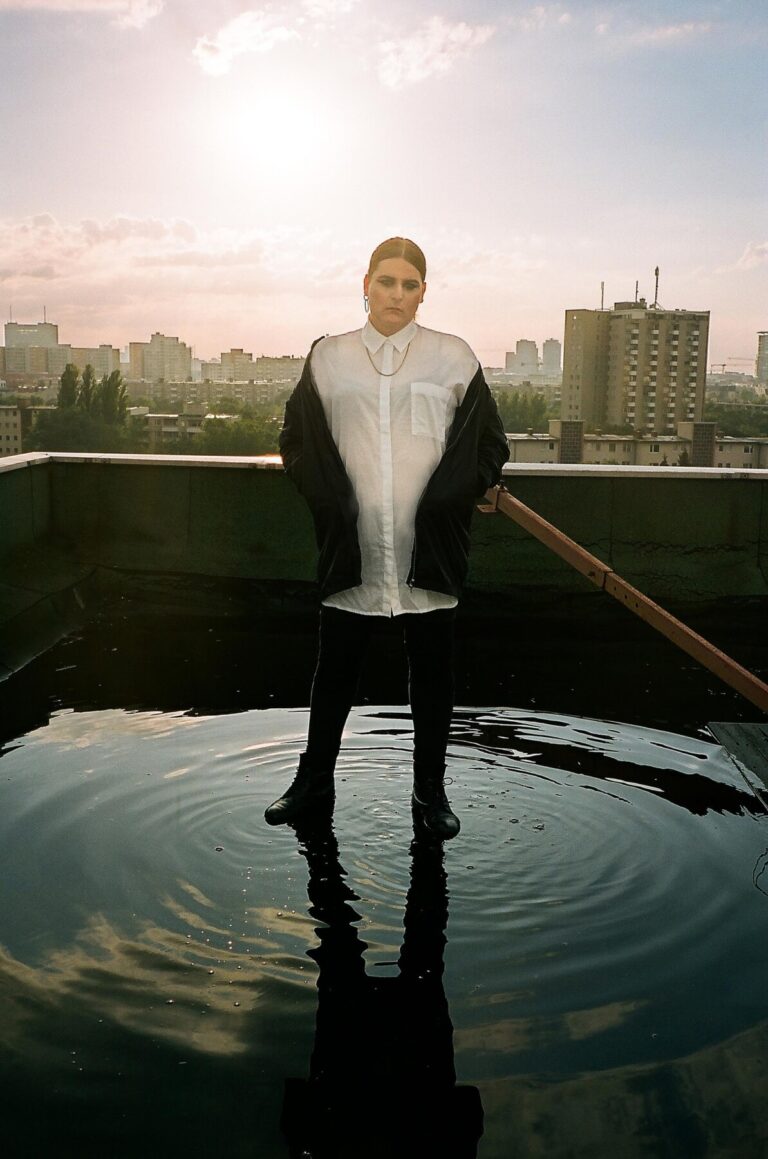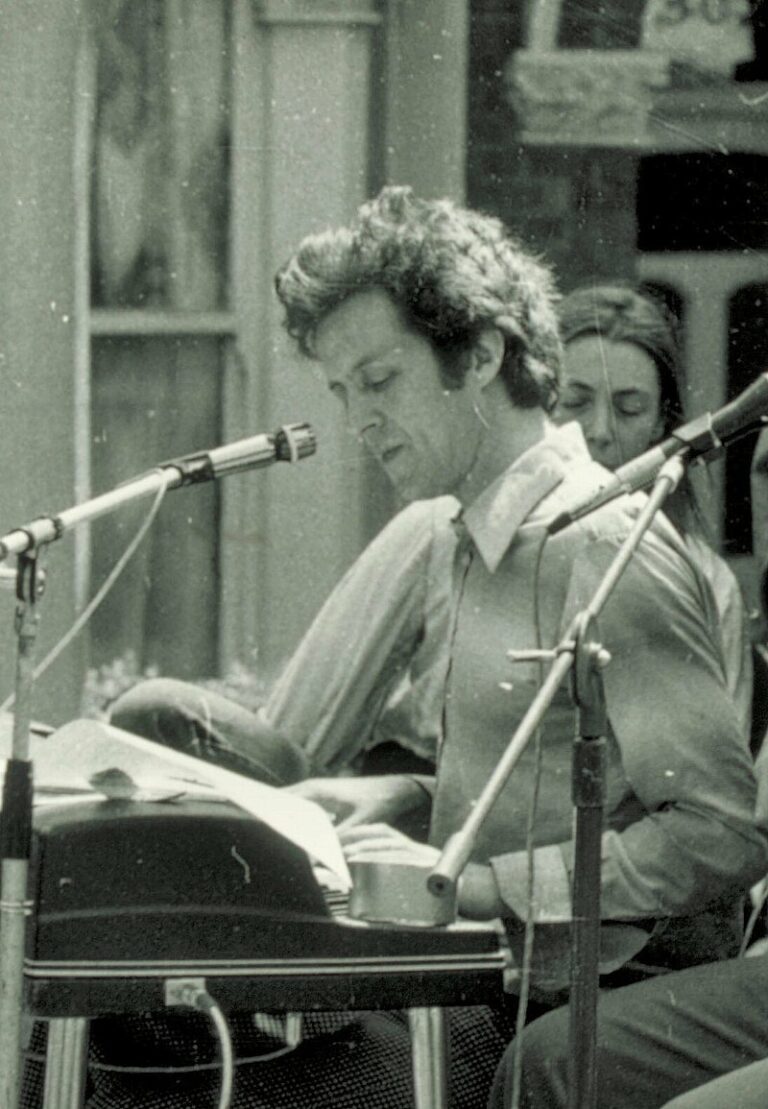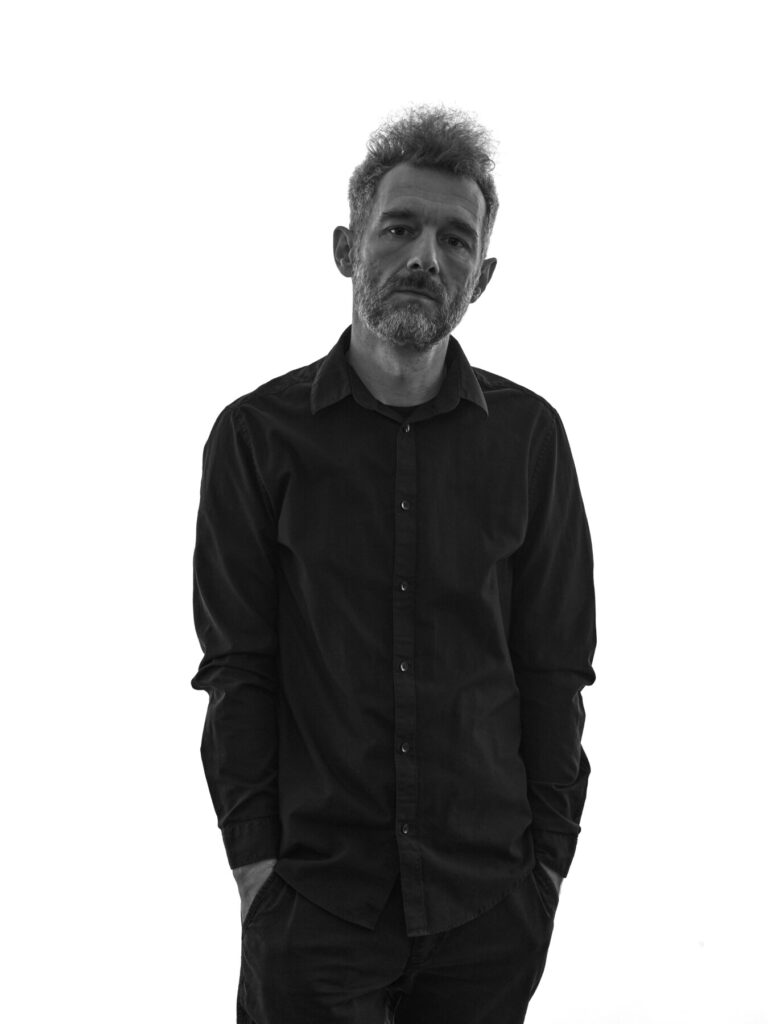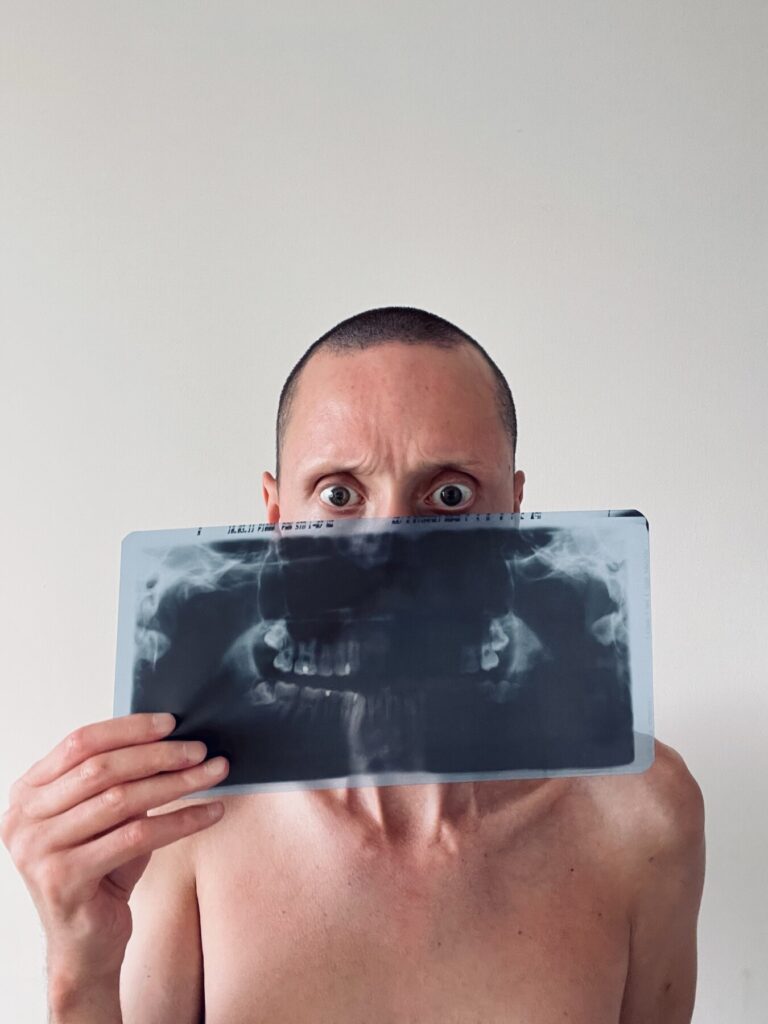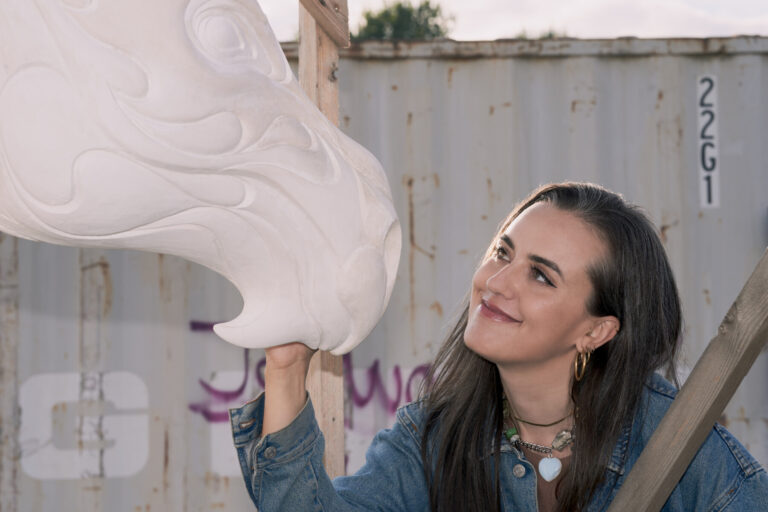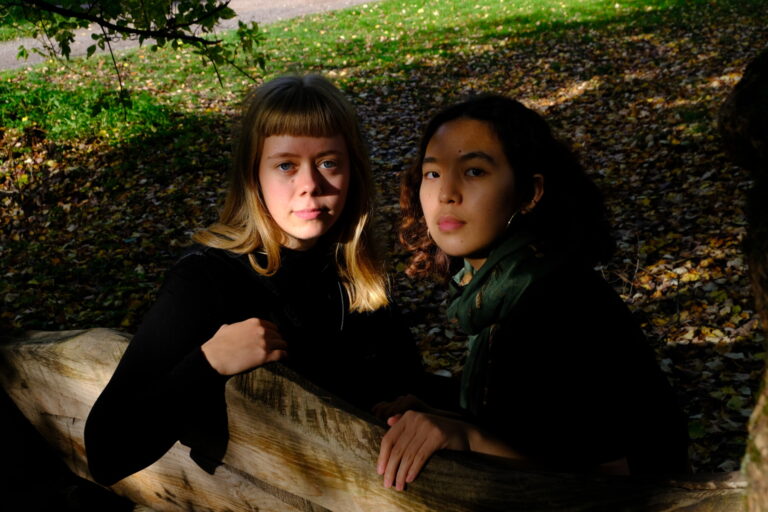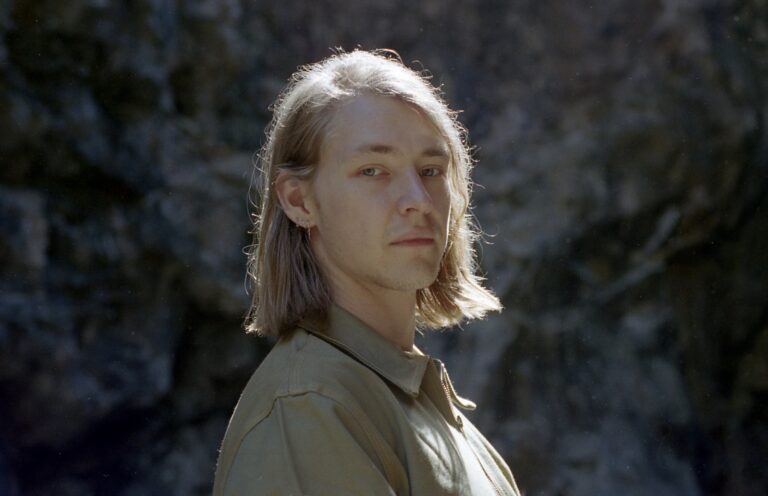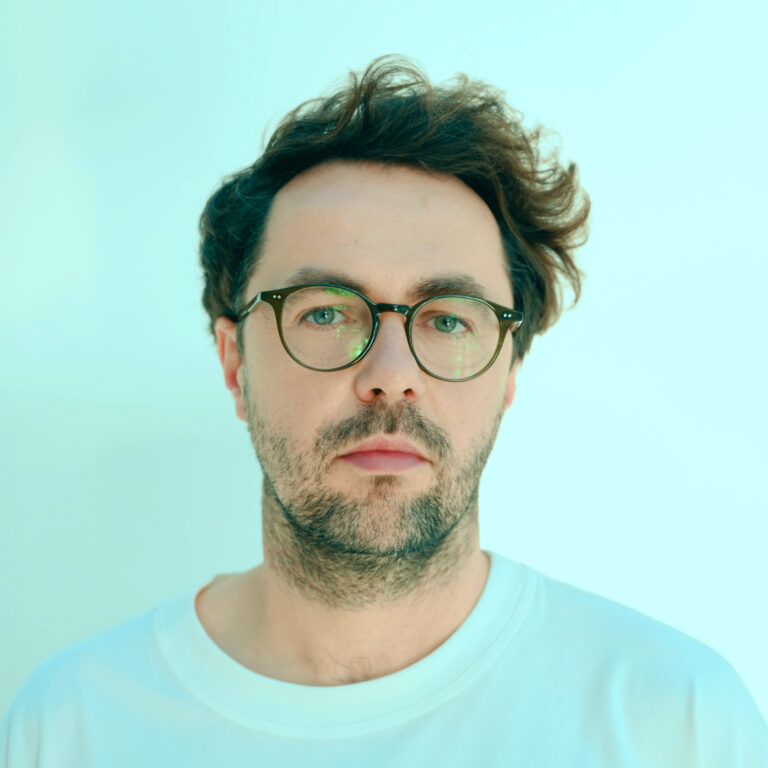Sanatorium
of Sound
Festival
10

Sanatorium
of Sound
Festival
10
Time. Rhythm.
This is the tenth year of the Sanatorium of Sound Festival. The upcoming edition is presented under the theme Time. Rhythm.
Time. Rhythm. Time. Rhythm.
Time. Rhythm Rhythm. Time. Rhythm Rhythm.
All these years, we have tried to present a programme rich in experimental artistic activities, which will once again revolve around the issue of time. This edition, we will focus on the organisation of time in music–rhythm. It orders, subjugates, and sometimes also surprises, confuses.
We also see rhythm as one of the fundamental concepts to describe contemporary culture. The word ‘rhythm’ itself comes from the Greek rhythmos (ῥυθμός), which means coordinated movement, and is also related to the verb rhein (ῥέω)–‘to flow’, ‘to move’. Etymologically, therefore, it refers to an organised, repetitive movement. In music theory, the rhythm of sounds gives meaning and order to a composition. But it also plays a key role in community building and the transmission of cultural values. Defined more broadly, still as an organising force, it affects both the functioning of individual entities and the structure of whole societies. At present, rhythm seems to be a concept undergoing intensive exploration and innovation, especially in the context of socio-cultural changes and the dynamic development of technology, as can be seen, for example, in computer algorithms, data processing and analysis processes or machine learning, which are based precisely on the rhythm of computational cycles.
At the same time, rhythm remains an effective tool for redefining one’s own corporeality and learning to carefully observe and embrace the changes taking place in the postmodern world. Henri Lefebvre wrote that one should listen to one’s body in order to be able to recognise the different kinds of rhythms surrounding us. Pauline Oliveros taught a similar practice. It is the body that serves as a metronome.
Time. Rhythm Rhythm Rhythm. Time Rhythm Rhythm Rhythm.
During this year’s Sanatorium of Sound Festival, we will discover new and surprising rhythms of musical expression. Sometimes they will be bold and tangible (Rafał Ryterski) or mechanical (Mariam Gviniashvili), sometimes barely perceptible, subcutaneous (Giuseppe Ielasi) or dreamy (Niilas). At other times improvised, as if scattered (Krzysztof Cybulski) or hypnotising with the same quality (Judith Hamann). We will see what happens to the metre when two rhythms are juxtaposed (Nora Klungresæter and Susanne Xin). The music will also pulsate in the rhythm dictated by the visuality (Gerard Lebik plays Wacław Szpakowski, Sanatorium of Sound Ensemble plays “Treatise” by Cornelius Cardew: Hamann, Ielasi, Lebik). Finally, we won’t forget the movement of the body through which the rhythm flows (DJ sets: KAROLINDA, monster, Ziúr).
Time. Rhythm.
Program
The Sanatorium of Sound is a festival dedicated to experimental music and the broad spectrum of sound art. Its main aim is to present the widest possible range of phenomena related to the development of musical forms in the 20th and 21st centuries. Thus far, the festival has showcased works by approximately 250 artists from around the world, many of which were created specifically in the context of the place during artistic residencies in Sokołowsko.
The Sanatorium of Sound Festival is not only about concerts but also a series of projects on the border between sound art and performance. It includes educational workshops, panel discussions, and projects dedicated specifically to this event, such as compositional commissions, artistic residencies, and curatorial practices related to the ecology of sound, architecture, nature, and medicine, created by musicians, composers, interdisciplinary creators, experts, theorists, scientists, and sound artists. The festival takes place in several locations in Sokołowsko, including the Zdrowie Cinema-Theatre, the Multimedia Hall, the Spa Park, and the ruins of a 19th-century sanatorium. The festival annually gathers around 1000 participants from around the world, attracting a unique, multi-generational audience. The festival is led by Zuzanna Fogtt and Gerard Lebik.
The Sanatorium of Sound Festival is organized by the In Situ Foundation for Contemporary Art in Sokołowsko. The main goal of the foundation is to create and maintain a space for art, education, and interdisciplinary creative processes. Since 2007, the foundation has been promoting activities in the field of international heritage dedicated to contemporary art and culture, with a particular emphasis on music, sound, visual art, performance, and film. In Situ organizes various cultural events, such as the Sokolowsko Film Festival Hommage à Kieslowski, Contexts-International Festival of Ephemeral Arts, Sanatorium of Sound, and since 2017, has been managing the archives of Krzysztof Kieślowski.
The Sanatorium of Sound Festival has been held since 2014 in Sokołowsko, a picturesque mountain village on the border of Poland and the Czech Republic. Sokołowsko is an extraordinary place on the map of Poland, where Dr. Hermann Brehmer once established the world's first specialized health resort and sanatorium for pulmonary diseases, serving as a prototype for the famous Swiss Davos. Currently, the 19th-century neo-Gothic building designed by the renowned Jewish architect Edwin Oppler is the seat of the "Laboratorium Kultury" created by the In Situ Foundation for Contemporary Art.
The Sanatorium of Sound Festival has been supported and cooperated with cultural institutions in Poland and abroad, including the EEA, the Ministry of Funds and Regional Policy, the Ministry of Culture and National Heritage, the Adam Mickiewicz Institute, Pro Helvetia, Kultur Des Bundes, the Polish-German Foundation, Fond Podium Kunsten, Polish institutes abroad, and independent NGOs, organizing events such as the Sanatorium of Sound Festival in Sokołowsko (2015-2023), Polish experimental music in Scandinavia (2015-2016), Polish Musical Avant-garde of the 20th century in Western Europe (2018-2019), and HILO - Polish-Norwegian Platform for New Music Development 2022-2024.
Every year, the Sanatorium of Sound focuses on a different theme, adapting the program of the current edition to the main idea of the festival.



